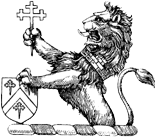Immigrants: America’s Hope? (Part II)
In this section of last month’s issue, we commented that if America, particularly in the coastal regions, is to remain civilized, the burden to keep it so will be on the immigrants — a sort of an inverse “white man’s burden.” We even speculated that a new Rudyard Kipling might come along to sing the praises of immigrants in light of the burden hoisted upon them.
Well, it turns out that an accidental Kipling has already been singing the praises of the cultural force that is America’s immigrants. That Kipling is the not-so-poetic U.S. Census Bureau.
Statistics for the 2000 U.S. Census indicate (as reported by the Associated Press, Sept. 7) that four percent of the 105.5 million U.S. households, or roughly 3.9 million households, are “multigenerational households,” that is, with a minimum of three generations living under the same roof. The Census Bureau broke down these multigenerational households into two principal categories: (1) “sandwich homes” consisting of the head of the household, his children, and his parents; and (2) “grandparent-led homes” consisting of the head of the household, his children, and his grandchildren. Of these two categories, the former evinces a strong, traditional family arrangement while the latter portends broken, nontraditional family arrangements.
So who is most likely to live in a multigenerational “sandwich home”? Immigrants! Not coincidentally, the states with the highest percentage of “sandwich homes” — Hawaii, California, New York, and New Jersey — are those with the highest number of first-generation Asian, Pacific Islander, and Hispanic immigrants, groups renowned for strong, traditional families.
You May Also Enjoy
Modern-day American "anti-colonialism" is composed mostly of neo-Marxism mixed with a smidgen of post-Victorian disillusionment.
Review of Race by Studs Terkel
My parents thought it was madness for a black American to move to South Africa.…

